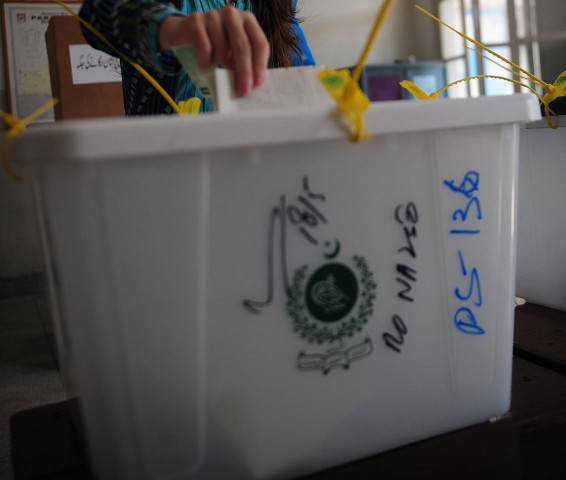FAFEN report: Major discrepancies found in May 2013 election data
Number of rejected votes exceeds margin of victory in 35 out of 266 NA constituencies.

Number of rejected votes exceeds margin of victory in 35 out of 266 NA constituencies. PHOTO: AFP
Among other discrepancies recorded in last year’s general elections, a report released by the Free and Fair Election Network (FAFEN) reveals that the number of rejected votes exceeds the margin of victory in 35 out of 266 National Assembly constituencies.
The analytical report also pinpointed that despite a considerable increase in the issuance of CNICs, the number of registered voters dropped in 100 NA constituencies last year as compared to the elections held in 2008.
According to the report, women made 43.6% of the 86.2 million registered voters in the elections held in May last year while women constituted 44% out of the 80 million registered voters in 2008.
The report further revealed that the number of registered voters in 93 NA constituencies was recorded differently in final polling scheme, election results accruing an absolute discrepancy of 246,858 voters.
The distribution of constituencies showing voter discrepancy is significantly skewed. Punjab leading with 57 of the 93 NA constituencies shows a difference of voters between the final polling scheme and result Form XVII. Khyber-Pakhtunkhwa has 16 such constituencies, followed by Sindh (15), Fata (4) and ICT (1).
Of the total of 246,858 votes in question, Punjab accounts for 233,225 (94.5%), K-P 6,462 (2.6%), Sindh 6,317 (2.6%), Fata 580 (0.2%) and ICT 274 (0.1%).
It stated that Form VII, published on ECP’s website following the elections, did not mention the number of rejected votes while the gazette notification of returned candidates did not record the number of registered voters.
The disproportionate and significant increase in the number of rejected votes emerged as one of the major discrepancy – the number increasing from 775,720 in 2002 to 973,694 in 2008 and further increasing to 1,502,717 in 2013 – an increase of 64% compared to 2008 elections.
The report highlighted that the number of rejected votes exceeds the margin of victory in 35 of the 266 constituencies analysed in this report.
Urban constituencies registered a substantial increase in turnout by 17%, followed by majority urban and predominantly urban constituencies seeing an increase of 13.2% and 12.8%, respectively. The predominantly rural constituencies witnessed an increase of 10.9% while majority rural constituencies showed an increase of 10.6%, the report said.
The 2013 elections witnessed returns for parties that varied across regions and provinces. While Sindh largely produced similar results - PPPP dominated rural Sindh while MQM urban areas, particularly Karachi - the other provinces underwent a significant change. PML-N and PTI were the largest beneficiaries of the change in Punjab and K-P while Pakhtun and Baloch nationalist parties made a strong comeback in Balochistan. Among the religious parties, JUI - while far from the overwhelming performance of MMA - secured significant votes and seats in both K-P and Balochistan.
Published in The Express Tribune, February 22nd, 2014.

















COMMENTS
Comments are moderated and generally will be posted if they are on-topic and not abusive.
For more information, please see our Comments FAQ